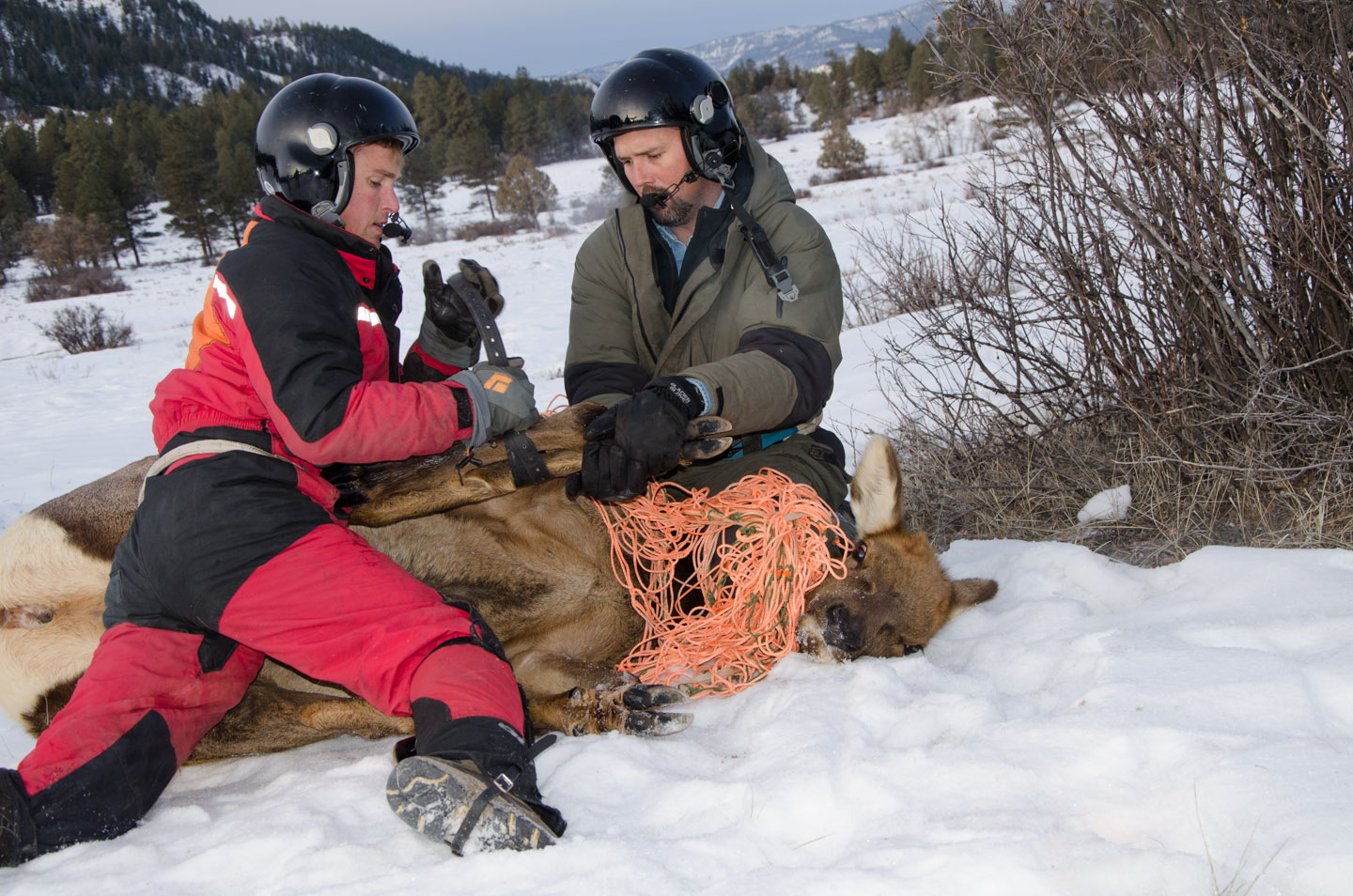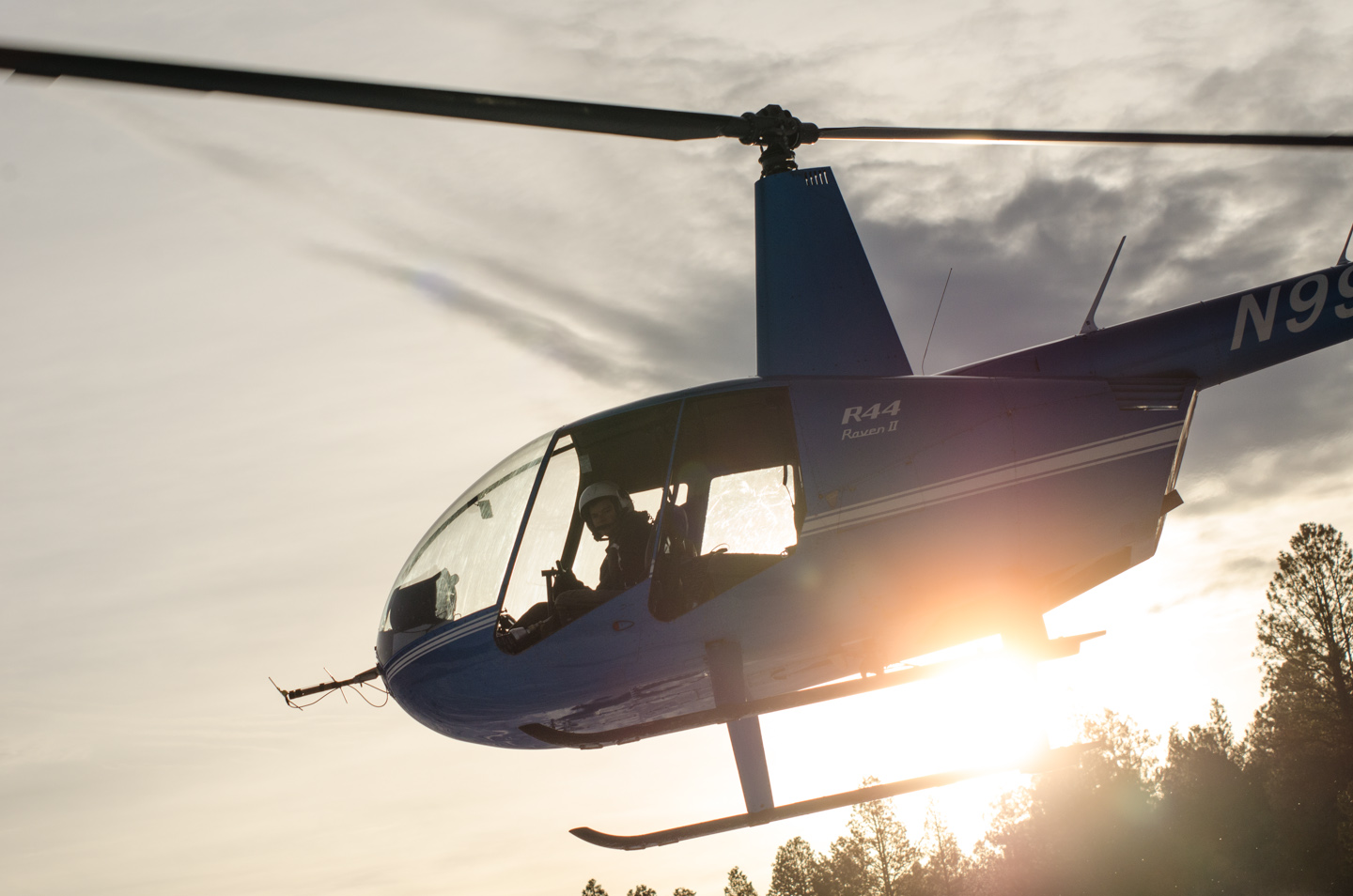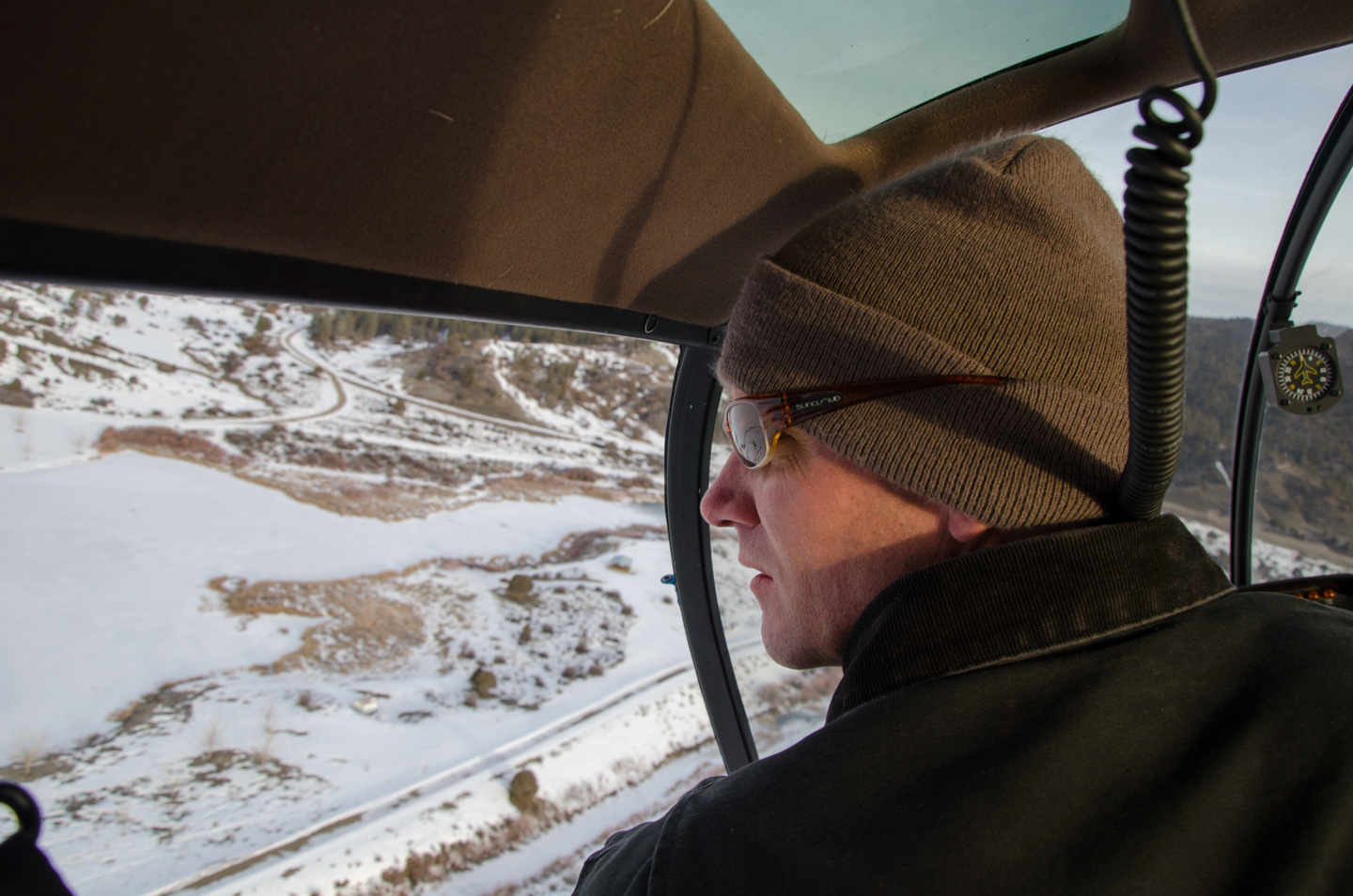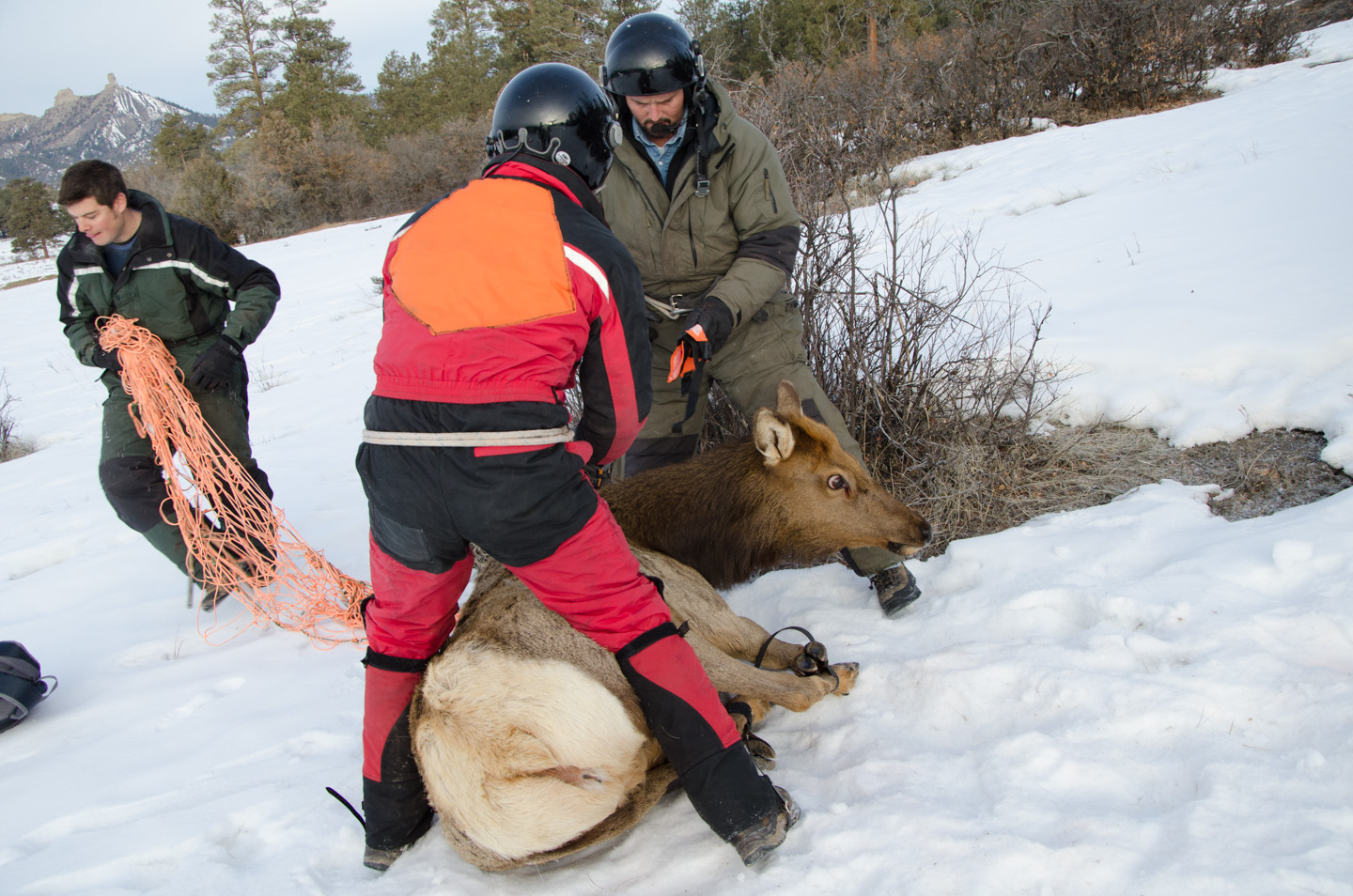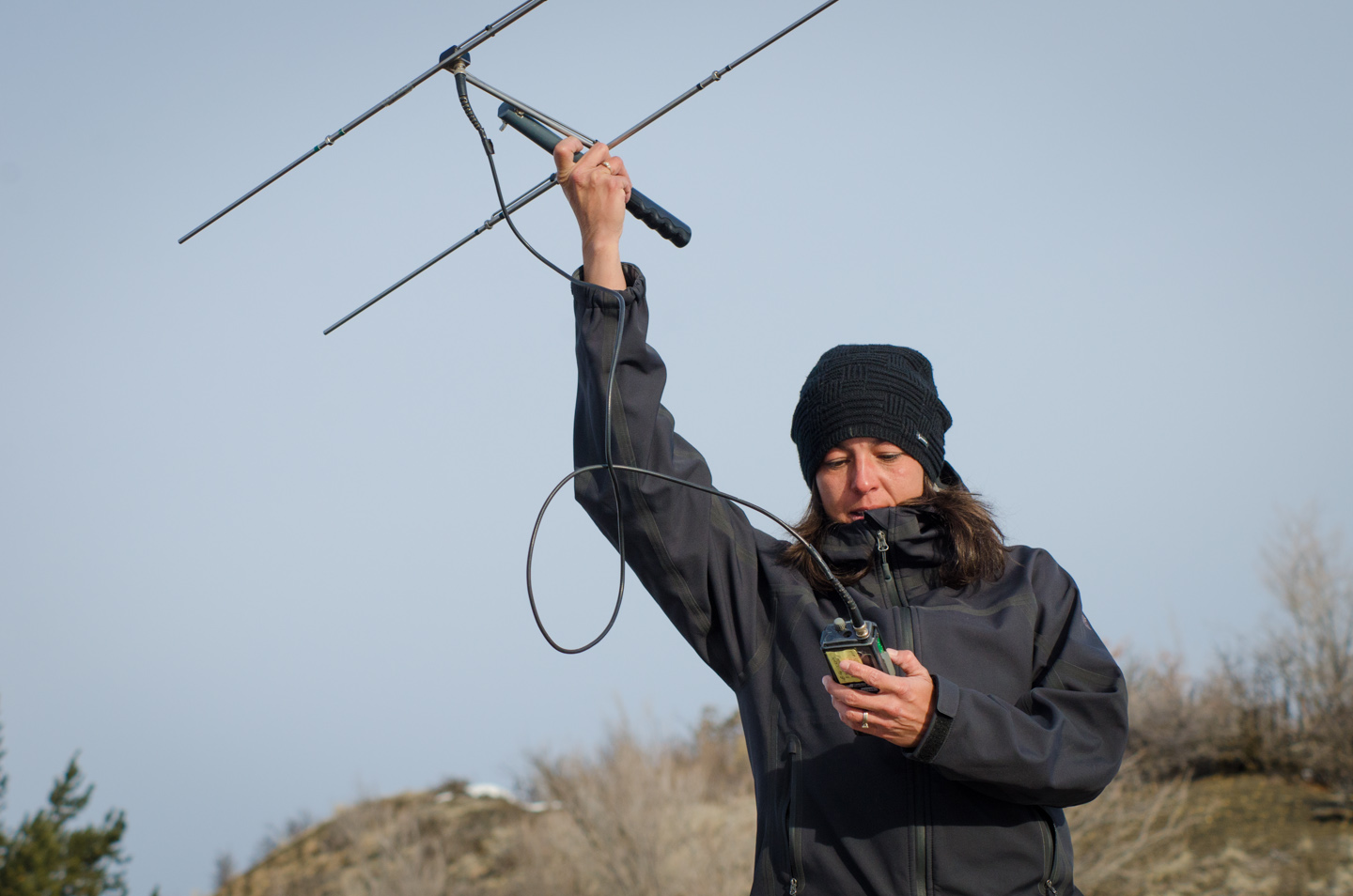Tracking elk using today’s technology








Finishing a week of aerial game counts across the Southern Ute Indian Reservation on Sunday, Feb. 3, Southern Ute Wildlife Resource Management Division Biologist Aran Johnson led a project to fit radio collars to cow elk on tribal lands.
The transmitters, which are designed to automatically drop off after two years, require capturing and handling of the animals for fitting and deployment.
“We deployed 15 radio collars this year, which is a relatively small number, but will give a sample of the habits of these animals, potentially leading to more in-depth study in the future,” Johnson said.
Set to fall off on Feb. 3, 2015, the collars will collect locations every two hours around the clock for the next two years. The data stored on board will be downloaded once collected from the field; location data can then be put into a Geographic Information System and illustrated on regional maps, showing migration routes across Southern Ute Reservation boundaries, high-traffic areas, and highway crossings. That information is used for a variety of purposes, including collaboration with the Colorado Department of Transportation on placement of traffic signs.
Aerial net gunning is proven to be a fast, safe and effective method of capturing large game, Johnson said.
The delicate procedure requires a pilot and crew in a helicopter to fly in close enough to a group of elk that they can shoot a net over an animal to immobilize it. Once on the ground with the animal, the crew proceeds to hobble, blindfold and collar it before releasing it to rejoin its herd. The whole procedure taking less then 10 minutes, minimizing stress to the animal.
Helicopter pilot Mark Shelton, owner and operator of Native Range Capture Services Inc., worked with crewmembers David Rivers, Donnie Wackerman, and Pamela Moriel to tag 15 elk in about half a day.
“This is a new project for us,” Johnson said. “[It’s] the first time since the early ‘90s that radio collars have been put out on elk on the east side.”
The tribe has been continually monitoring mule deer on the east side of the reservation since 2004 with great success, he said.
“We have collected such valuable mule deer data that it was a natural progression to want to gain that same kind of knowledge about elk,” Johnson said.
Division head Steve Whiteman said he expects to find some key differences between deer and elk behavior using the new technology.
“I’m very excited about this project because we’ll gain a much better picture of elk movement and habitat use on the reservation,” he said. “We have many years of data on mule deer patterns, but almost nothing on elk. We suspect elk behavior will be quite different from deer, and we’ll soon have the data to confirm or refute that.”
“The important difference between the 1990s and now is the technology of the radio collars,” Johnson said. “Newer radio collars are GPS enabled, allowing biologists to collect hour-by-hour data, as opposed to physically collecting single locations each month from a fixed-wing airplane,” as was necessary using earlier models.
“This year’s capture targeted specific areas of the Southern Ute Reservation: those areas that traditionally host large winter concentrations of elk and an area that encompasses a tribal range unit,” Johnson said. “Additionally, all these areas see focused harvest during the January cow hunt, which makes us want to know as much as possible about these herds.”
Collars were distributed across Washington Flats, East Cat Creek, and Valle Seco on the eastern border of the reservation.
The type of information the tribe is going to gather from these collars will include migratory routes, timing of migration, habitat use, and seasonal range occupation times, as well as estimating survival rates of the animals, Johnson said.
“The info collected allows us to make the most accurate management recommendations possible to the Tribal Council and allows us to give the membership accurate, up-to-date information about the big game herds on the reservation,” Johnson said. “The nature of wildlife management is that we are forced make assumptions and extrapolate small amounts of information across larger scales. This type of project can cut out that type of guesswork. If a tribal member asks, ‘Where do the deer and elk migrate each season?” or “What impacts do highways have on our herds?’ we can give them precise information. Radio collars really give us incredible insight into the lives of these animals.”
Whiteman said such information will help the tribe make better land-management decisions across the board.
“This information on elk movement and habitat use will be very helpful to us as land managers,” he said. “We’ll have a better understanding of those areas that are important to elk, and be able to make more informed decisions about land use and development activities on tribal lands that might affect those areas.”
It’s critical that the tribe cultivate its own research data, Johnson said.
“These elk are a shared resource,” he said. “While we work closely and effectively with neighboring agencies, it’s important for the tribe to gather its own information on animals occupying tribal lands, and to be able to make important management decisions using scientifically based studies.”
One question often asked by tribal members is whether animals with radio collars can be harvested. The answer, Johnson said, is yes.
“While we don’t prefer that collared animals are taken, if it happens, we understand and consider it good data to us as well if an animal is harvested by a hunter,” he said, adding that the collars should be returned to the tribe’s Division of Wildlife as soon as possible.

